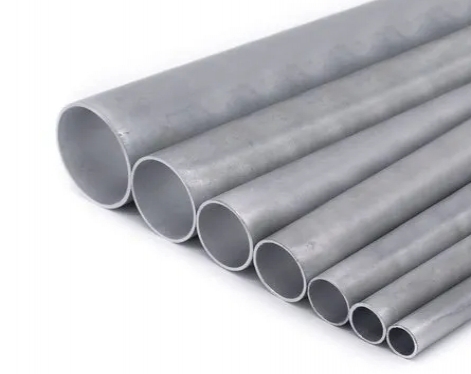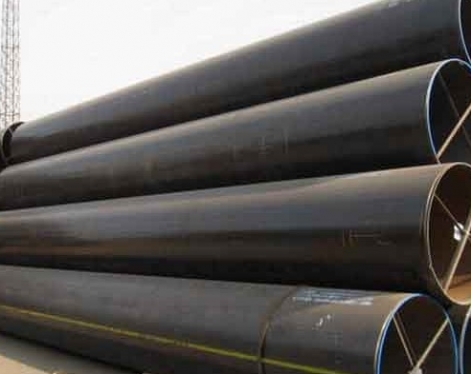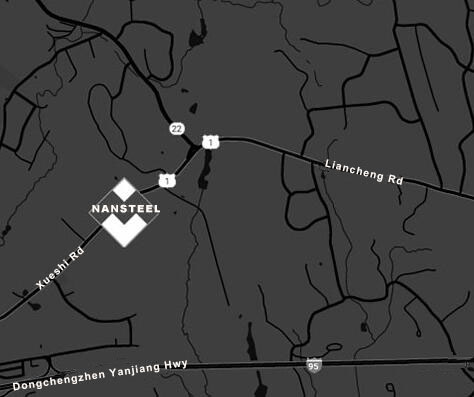In the field of oil and gas extraction, well casing pipe is regarded as the "stabilizing force" that maintains the normal operation of oil wells. Each oil well requires multiple layers of casing pipe depending on the drilling depth and geological conditions. Well casing pipe is like the solid skeleton of the oil well, providing indispensable support for the entire mining operation. During the drilling process, it can prevent the well wall from collapsing due to various complex geological forces and ensure smooth drilling of the drill bit. After well completion, the well casing pipe continues to function to ensure stable operation of the well during long-term production.
Unique features of well casing pipe
1. High strength and high toughness
Well casing pipe has to serve in a complex underground environment and withstand comprehensive stresses such as tension, compression, bending and torsion. This requires that the well casing pipe must have high strength and high toughness. Casing pipes of different steel grades, such as J55 and K55, are designed to adapt to different stress environments and ensure that no failures such as fracture and deformation occur under complex working conditions.
2. Good wear and corrosion resistance
During long-term use, the well casing pipe will come into contact with drilling fluid, formation rock, produced oil and gas and other media, which requires it to have good wear resistance and corrosion resistance. By adding alloy elements such as chromium and molybdenum to steel, or using surface coating treatment, the corrosion resistance and wear resistance of the casing pipe can be effectively improved, extending its service life in harsh environments.
3. Anti-collapse performance
In areas with complex geological conditions, such as salt rock formations and mudstone formations, the formations will produce large external extrusion pressures, which requires the well casing pipe to have excellent anti-collapse performance. Once the casing pipe’s anti-collapse performance is insufficient, deformations such as shrinkage and flattening may occur, resulting in the inability of the oil well to produce normally.

Application areas of well casing pipe
1. Oil and gas drilling
Well casing pipe is ubiquitous in oil and gas drilling operations. In the early stages of drilling, surface casing pipe will be lowered first to prevent the soft upper strata from collapsing and ensure the safety of subsequent operations. As the drilling depth increases, complex formations are encountered, such as high-pressure oil, gas, and water layers. In order to isolate these difficult-to-control formations and ensure the normal circulation of the drilling fluid and smooth drilling, technical casing pipe comes into play. When the target oil layer is reached, the oil layer casing pipe is responsible for isolating the oil, gas and water layers, building a channel for subsequent oil and gas exploitation, and ensuring that the oil and gas can be smoothly transported from underground to the ground.
2. Wells with special geological conditions
In deep and ultra-deep wells, well casing pipe faces huge challenges. As the depth of the well increases, the pressure, tension, torque and other loads on the casing pipe increase dramatically. At the same time, it also needs to resist the influence of high temperature. This requires the casing pipe to have high strength and high temperature resistance to maintain the stability of the well wall. In high-temperature and high-pressure wells, the formation pressure can reach over 100MPa. The casing pipe must not only withstand huge external squeezing force and internal pressure, but also ensure sealing to prevent oil and gas leakage.
Functions of different types of well casing pipe
As the first layer of casing pipe in the wellbore structure close to the open hole wall, the guide pipe plays a vital role in the initial stage of drilling. It is mainly used to protect the surface layer near the wellhead to prevent it from being washed away by mud during drilling.
The surface casing pipe is the outermost casing in the casing process of oil and gas wells. It is mainly used to reinforce the well wall of the upper loose rock layer to prevent these soft formations from collapsing and affecting the drilling process.
Technical casing pipe is the key to dealing with complex situations during drilling. When encountering complex formations such as high-pressure layers, leakage layers or collapse layers, technical casing pipe can isolate these difficult-to-control formations.
The oil layer casing pipe, also known as the production casing pipe, is the last layer of casing pipe in the casing process of oil and gas wells, which runs from the wellhead to below the oil and gas layer. Its main function is to isolate the oil, gas and water layers and prevent the layers from interfering with each other.
Read more: Steel well casing pipe sizes
Unique features of well casing pipe
1. High strength and high toughness
Well casing pipe has to serve in a complex underground environment and withstand comprehensive stresses such as tension, compression, bending and torsion. This requires that the well casing pipe must have high strength and high toughness. Casing pipes of different steel grades, such as J55 and K55, are designed to adapt to different stress environments and ensure that no failures such as fracture and deformation occur under complex working conditions.
2. Good wear and corrosion resistance
During long-term use, the well casing pipe will come into contact with drilling fluid, formation rock, produced oil and gas and other media, which requires it to have good wear resistance and corrosion resistance. By adding alloy elements such as chromium and molybdenum to steel, or using surface coating treatment, the corrosion resistance and wear resistance of the casing pipe can be effectively improved, extending its service life in harsh environments.
3. Anti-collapse performance
In areas with complex geological conditions, such as salt rock formations and mudstone formations, the formations will produce large external extrusion pressures, which requires the well casing pipe to have excellent anti-collapse performance. Once the casing pipe’s anti-collapse performance is insufficient, deformations such as shrinkage and flattening may occur, resulting in the inability of the oil well to produce normally.

Application areas of well casing pipe
1. Oil and gas drilling
Well casing pipe is ubiquitous in oil and gas drilling operations. In the early stages of drilling, surface casing pipe will be lowered first to prevent the soft upper strata from collapsing and ensure the safety of subsequent operations. As the drilling depth increases, complex formations are encountered, such as high-pressure oil, gas, and water layers. In order to isolate these difficult-to-control formations and ensure the normal circulation of the drilling fluid and smooth drilling, technical casing pipe comes into play. When the target oil layer is reached, the oil layer casing pipe is responsible for isolating the oil, gas and water layers, building a channel for subsequent oil and gas exploitation, and ensuring that the oil and gas can be smoothly transported from underground to the ground.
2. Wells with special geological conditions
In deep and ultra-deep wells, well casing pipe faces huge challenges. As the depth of the well increases, the pressure, tension, torque and other loads on the casing pipe increase dramatically. At the same time, it also needs to resist the influence of high temperature. This requires the casing pipe to have high strength and high temperature resistance to maintain the stability of the well wall. In high-temperature and high-pressure wells, the formation pressure can reach over 100MPa. The casing pipe must not only withstand huge external squeezing force and internal pressure, but also ensure sealing to prevent oil and gas leakage.
Functions of different types of well casing pipe
As the first layer of casing pipe in the wellbore structure close to the open hole wall, the guide pipe plays a vital role in the initial stage of drilling. It is mainly used to protect the surface layer near the wellhead to prevent it from being washed away by mud during drilling.
The surface casing pipe is the outermost casing in the casing process of oil and gas wells. It is mainly used to reinforce the well wall of the upper loose rock layer to prevent these soft formations from collapsing and affecting the drilling process.
Technical casing pipe is the key to dealing with complex situations during drilling. When encountering complex formations such as high-pressure layers, leakage layers or collapse layers, technical casing pipe can isolate these difficult-to-control formations.
The oil layer casing pipe, also known as the production casing pipe, is the last layer of casing pipe in the casing process of oil and gas wells, which runs from the wellhead to below the oil and gas layer. Its main function is to isolate the oil, gas and water layers and prevent the layers from interfering with each other.
Read more: Steel well casing pipe sizes









